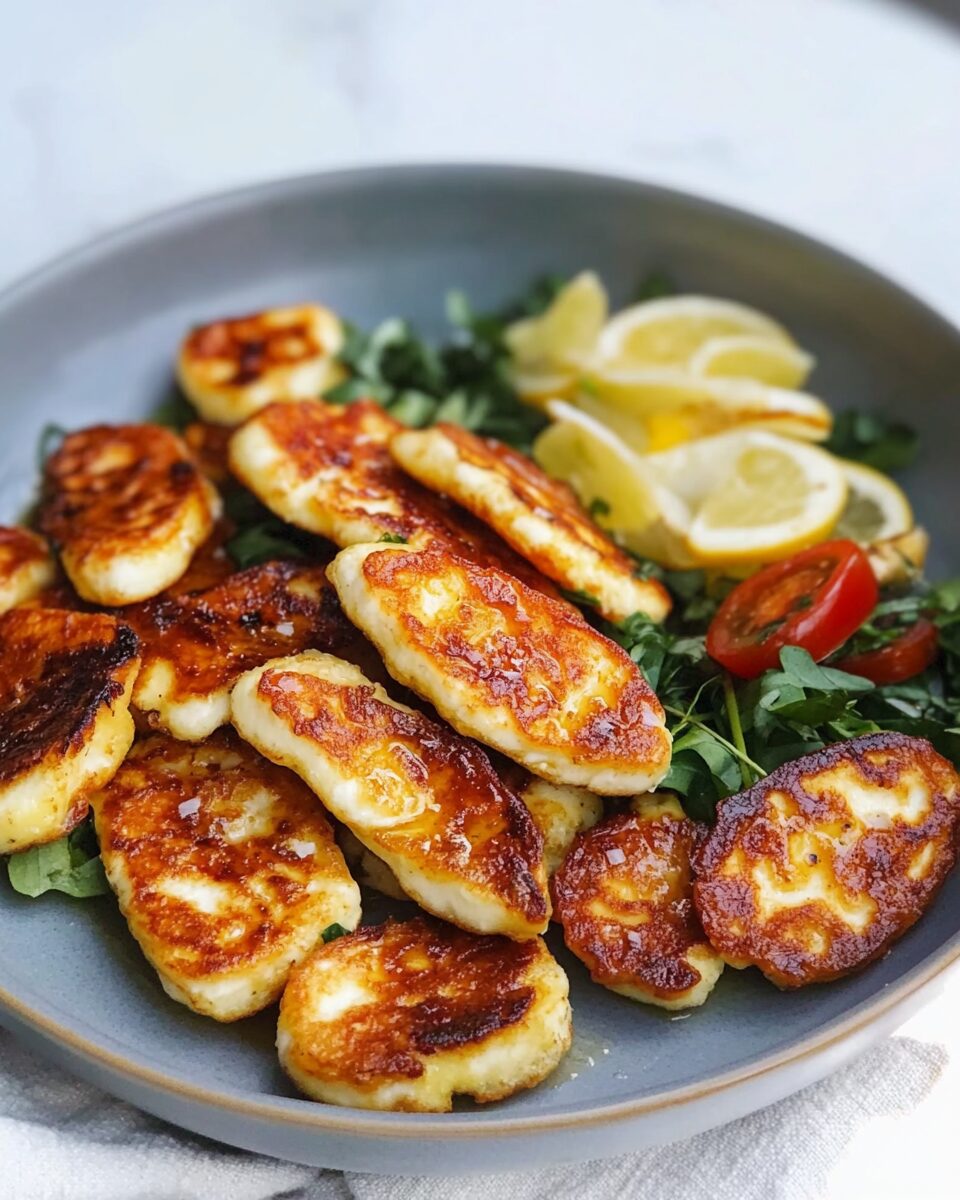The Appeal of Halloumi
One of the reasons halloumi is beloved is its versatility. In contrast to many other cheeses that melt or become overly soft when exposed to heat, halloumi holds its shape, making it excellent for grilling or pan-frying. This attribute allows it to be used in a variety of dishes, from salads to sandwiches, or even enjoyed on its own as an appetizer or snack. The frying process enhances its natural flavors, while also introducing a satisfying contrast between the crispy outer layer and the tender interior.
The simplicity of the pan-fried halloumi recipe is one of its strongest attributes. With minimal ingredients, it can be prepared quickly, making it a go-to for those who want to create a delicious dish without much fuss. All it requires is a little olive oil, and a squeeze of lemon to bring out its tangy notes, with herbs like oregano often added for extra aroma and flavor.
The Role of Texture and Flavor
A significant part of halloumi’s appeal is its texture. Its high melting point is due to its unique preparation process, which involves heating the curds before forming them into cheese. This process gives halloumi its resistance to melting, meaning that when it’s fried, it doesn’t lose its shape but becomes perfectly crisp on the outside while staying tender on the inside. This duality of texture — crispy on the outside and soft on the inside — is what makes halloumi so satisfying to eat.
Flavor-wise, halloumi is known for its saltiness, which pairs wonderfully with fresh lemon juice or herbs like oregano. The lemon juice not only cuts through the saltiness but adds a refreshing acidity that balances the richness of the fried cheese. The herbs elevate the dish by adding earthy undertones and making the halloumi feel more like a Mediterranean treat.
Pairing Suggestions
While pan-fried halloumi is delicious on its own, it can be paired with a variety of foods to create a more complete meal. Some popular pairings include:
- Salads: Adding halloumi to a fresh green salad can transform it from a side dish into a satisfying main course. The contrast between the crisp vegetables and the chewy, salty halloumi is irresistible. Ingredients like cucumbers, tomatoes, and arugula are popular choices in salads that feature halloumi. A drizzle of balsamic or lemon vinaigrette complements the cheese’s flavors perfectly.
- Grilled Vegetables: The smoky flavors of grilled vegetables like zucchini, peppers, or eggplant pair beautifully with the fried halloumi. The combination of textures and flavors creates a well-rounded dish that’s both satisfying and healthy.
- Pita or Flatbreads: Serve halloumi with warm pita bread or flatbreads for a Mediterranean-style snack or appetizer. It can also be incorporated into wraps, along with hummus, cucumbers, and tomatoes for a delicious vegetarian option.
- Dips and Spreads: Serving halloumi alongside dips like tzatziki or baba ghanoush can add depth to your meal. The creaminess of these dips contrasts with the cheese’s firm texture, creating a delightful eating experience.
- Honey and Fruit: For those looking for a sweet and salty combination, halloumi works well with honey or fresh fruit like figs, watermelon, or pomegranate seeds. This Mediterranean-inspired combination can be served as a sophisticated appetizer or even a dessert.
Health Considerations
Nutritionally, halloumi is relatively high in fat and salt, so it’s best enjoyed in moderation. However, it’s also a good source of protein and calcium, making it a valuable addition to a balanced diet. Those following a vegetarian diet appreciate halloumi for its meat-like texture and protein content, as it can serve as a filling and satisfying alternative to meat in many dishes.
For those concerned about sodium intake, halloumi’s saltiness can be reduced by soaking it in water for a few hours before cooking. This helps to remove some of the excess salt, though it will still retain its characteristic flavor.
Cultural Significance
Halloumi has its roots in the Eastern Mediterranean, particularly Cyprus, where it has been produced for centuries. Its name comes from the Greek word “almi,” meaning salty, which reflects its briny taste. Traditionally, halloumi was made by hand in Cypriot villages, where families would create the cheese from the milk of their sheep or goats. Over time, it became a staple of Cypriot cuisine, and today it is enjoyed in many countries around the world.
In Cyprus, halloumi is often eaten with watermelon during the hot summer months, a combination that balances the cheese’s saltiness with the refreshing sweetness of the fruit. The cheese is also commonly served as part of a mezze, a selection of small dishes that are typically enjoyed as appetizers or snacks. In Greece and Turkey, halloumi is sometimes grilled and served alongside olives and bread, showcasing its adaptability in various culinary traditions.
Conclusion
Pan-fried halloumi is an incredibly simple yet delicious dish that brings out the best qualities of this unique cheese. With its crispy exterior and soft interior, along with its salty, tangy flavor, halloumi appeals to a wide range of palates. Whether served on its own, paired with vegetables, or incorporated into a more complex dish, halloumi provides a delightful eating experience that is both satisfying and versatile. Its high protein content and ability to hold its shape when fried make it a favorite among vegetarians and cheese lovers alike.
Incorporating pan-fried halloumi into your culinary repertoire allows you to enjoy a taste of Mediterranean cuisine without requiring complicated ingredients or techniques. Whether enjoyed as a quick snack or part of a more elaborate meal, halloumi’s unique flavor and texture make it a standout addition to any table.

